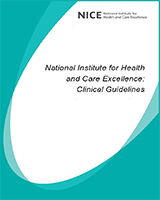| Asha 201311 | Observational cohort study | ED | SAS (senior assessment and streaming). Following triage, appropriate patients were taken to a dedicated clinical area staffed by an emergency physician intern (additional to usual rota staff) and senior nurse; versus. Days when the model of care was not implemented. | Patients presenting to the ED of St George Hospital, a tertiary referral centre located in Sydney, Australia. | Length of stay, percent of patients achieving the National Emergency Access Target (NEAT), percent of discharged patients achieving NEAT, percent of admitted patients achieving NEAT, ‘did not wait to be seen’ rate. |
| Christmas 201330 | Observational study | ED | Consultant night shift versus. Middle grade doctor night shift. | Patients presenting to Barnsley District General Hospital emergency department, UK. | Length of stay, percent patients admitted, percent returning within 7 days. |
| Davis 201440 | RCT | ED | SWAT (senior work up assessment and treatment) model of care including emergency physician, junior medical officer and ED nurse versus control (standard care). | patients admitted to the emergency department of an inner city tertiary level hospital in Sydney Australia. | Percent achieving NEAT; median length of stay; percent of admitted patients achieving NEAT, percent of discharged patients achieving NEAT, admissions, discharges. |
| Harvey 200866 | Observational study | ED | Junior doctors strike period versus. Non-strike period. | All patients presenting to ED of Waikato Hospital, a 650 bed university-affiliated teaching hospital. | Length of stay, number of clinical investigations, percent seen within recommended waiting time, admission rate, day unscheduled readmissions, ‘did not wait to be seen’ rate, mortality. |
| Jarvis 201476 | Observational cohort study | ED | Emergency Department Intervention Team ‘EDIT’ consisting of an additional consultant, senior nurse and health care assistant. The role of consultant was to sign off the investigation plan, order radiological investigations and perform a more thorough assessment of those patients deemed eligible for discharge. Point of care testing was available for full blood counts, renal function, blood gas analysis; versus Nurse-led triage using Manchester triage tool. Blood samples were analysed in the central hospital lab. | All patients (adults and children) presenting to the emergency department between 9am and 5pm were included unless deemed to be suffering from a minor injury at Calderdale Royal Hospital, Halifax, UK. | ‘Time to ED ready’ (length of stay). |
| McNeill 2009107 | Observational cohort study | AMU | Consultant present versus. Consultant absent. | 2928 treated at AMU, Ipswich Hospital, UK. | Length of stay, percent discharged on day of admission, percent of patients discharged within 24 hours and readmitted within 1 week for same clinical problem, mortality during admission. |
| Shetty 2012131 | Before and after study | ED | SAFE-T zone model of care (multiple interventions including early senior ED physician review, point-of-care testing) versus no model of care. | All patients presenting to ED at Westmead Hospital, a tertiary adult hospital with 650 emergency beds in western Sydney metropolitan area. | Length of stay, ‘did not wait to be seen’ rate. |
| White 2010149 | Before and after study | ED | Proposed management of patients by junior trainees versus the subsequent effect of the senior review process on patient disposition. | All patients who had a change of disposition from admission to discharge by the senior doctor (consultant) in the ED, Ninewells Hospital, Dundee, UK. | Admissions. |
